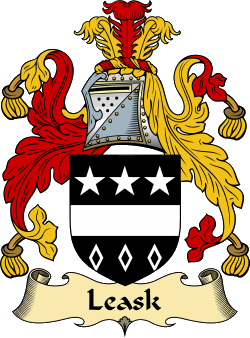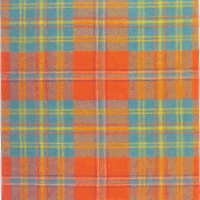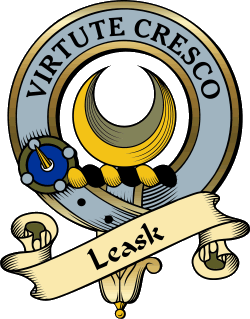|
|
Search

|
  Home Home
|
  Surname Surname
|
  First Name First Name
|
Popular Products

|
  Coat of Arms Coat of Arms
|
  Clan Badges Clan Badges
|
  Books & Gifts Books & Gifts
|
  Celtic Jewelry Celtic Jewelry
|
  Black Shirts Black Shirts
|
  CD Music CD Music
|
  Download Download
|
 Design Gallery
Design Gallery

|
  Irish Irish
|
  Flags Flags
|
  Celtic Celtic
|
  Tartans Tartans
|
  Scottish Scottish
|
  Claddagh Claddagh
|
  Surnames Surnames
|
  Highlander Highlander
|
  Celtic Radio Celtic Radio
|
Research

|
  History History
|
  Country Country
|
  Families Families
|
|
|
|
|
 We produce shirts for clans, organizations or websites! Expediated manufacturing and shipping is available for an additional charge. Our ever growing selections of designs includes family Coat of Arms, Scottish Clan Badges, Irish Claddagh Badges, Flags, Tartans, Surnames, Celtic, Irish and Scottish designs. Please contact us for a custom quote on bulk orders.
|
|
Our Heraldry Database has thousands of Family histories to search. Visit Now!
Morrison

Coat of Arms
The Chlann Mhic-Ghille-Mhuire, meaning "Devotee of St. Mary" or Morrison clan is said to be Scandinavian in origin, supposedlydescending from the natural son of the King of Norway who wasshipwrecked of the shores of Lewis. This is the Morrison clanwhereas the Morrisons of the Central Highlands, "sons of Maurice",and the Morrisons who descend from the O'Muirgheasain bards fromIreland who settled in.....
|
|
|
Heraldry Database: Leask
Leask

|
|


Surname: Leask
Branch: Leask
Origins: Scottish
More Info: Scotland
|
|
Background: There is more than one theory as to the origin of the name Leask. One is from the Anglo-Saxon word lisse which means happy. Another is that it comes from the Norse meaning of stirring fellow. Another is that it comes from Liscus which was the name of the chief of a tribe called the Haedui. The Haedui were a tribe of Gauls as described by Julius Caesar in his Gallic Wars. Another theory concerns the Castle of Boulogne, once the possession of Charlemagne, at one time belonged to a family called de Lesque. William de Laskereske's signature appears on the Ragman Roll of 1296.
Later William Leask was granted the lands of Leskgoroune by King David II of Scotland, son of Robert the Bruce. William was also the first known chief of the Clan Leask. The second chief was baillie of the barony of Findon. He inherited lands from Henry de Brogan, Lord of Achlowne, in 1390, later in the 1400s another branch of the family sprung up on Orkney after Jamis of Lask, younger son of Thomas de Lask of that Ilk settled there.
During the Anglo-Scottish Wars the clan suffered when they fought against the English at the Battle of Flodden Field in 1513. Both William, the fifth chief of the clan and his eldest son Alexander were killed. William's younger son also called William became the 6th chief of the clan. William Lesk of that Ilk, the seventh chief supported the infant King James VI of Scotland in opposition to his mother Mary, Queen of Scots after the murder of Lord Darnley and her scandalous marriage to Bothwell.
Between 1615 and 1616 there appears to have been a disagreement of some sort between the Leasks and the neighbouring Clan Gordon. In all the recorded cases the Gordons appear to have been the aggressors; Adam Gordon, brother of the Laird of Gight assaulted Alexander Leask, then the son of the chief was attacked by George Gordon and finally William Leask of that Ilk was ambushed by John Gordon of Ardlogy and a party of armed men. Also in the seventeenth century the Leasks suffered terribly by investing heavily in the Darién scheme. The venture was a disaster with a vast amount of Scotland's wealth being lost which in some part led to the union of Scotland and England Alexander Leask of that Ilk, the thirteenth chief was forced to give up his estates which were taken over by Robert Cumming.
In 1963, a descendant managed to buy back a portion of the family lands and established the Leask Society with the support of other prominent Leasks such as Lieutenant General Sir Henry Leask, sometime governor of Edinburgh Castle and General Officer commanding the Army in Scotland. In 1968 Moira Anne Helgesen was granted the chiefship of the clan by the Lord Lyon, where apon she changed her name and became: Madam Anne Leask of Leask. She died in April 2008 and will be succeeded in the chiefship of the clan by Jonathan Leask, who will become the 23rd chief of Clan Leask.
|
 Motto: Motto: Virtute cresco, I grow by virtue. Arms: Sable, a fesse between three mullets in chief and as many mascles in base Argent. Crest: A Crescent Argent. Supporters: Issuant from two roses Or, barbed and seeded Vert, as many wax candles Proper, inflamed Gules. View the Heraldry Dictionary for help.

As with many Scottish families, there are several possibilities as to the origin of the name. It may be a diminutive of the Anglo-Saxon 'lisse', meaning 'happy'. In Norse it means 'a stirring fellow'. The late Professor Keith Leask of Aberdeen believed that Liscus, chief of the Haedui, a tribe of Gauls described by Julius Caesar in his Gallic Wars, was the ancestor of the Leasks.
William de Laskereske appears on the Ragman Roll of 1296, submitting to Edward I of England. Around 1345 William Leask was granted a charter of confirmation by David II, son of Robert the Bruce, to his lands of Leskgoroune or Leskgaranne. He may be the same Willaim Leysk who was recorded in the parish records of the church at Ellon in Aberdeenshire as 'Willaim de Laysk, the elder, Lord of that Ilk, bequeathed a pound of wax yearly to the altar of the Holyrood in the church of St. Mary of Ellon'. He also bequeathed from his lands at Logy a stone of wax for lights to be burned on the Sabbath and other feast days on his tomb and those of his wives, Alice de Rath and Mariota de St. Michael. His seal was appended to the charter confirming the donations, along with that of the Bishop of Aberdeen, in 1380. The local kirk session records at the beginning of the seventeenth century show that William Lask of that Ilk and his tenants were regular attenders in the newly reformed church at Ellon. The second known chief, who was also baillie of the barony of Findon, inherited half of the lands of Henry de Brogan, Lord of Achlowne, in 1390. In 1391 he appears as a witness to a charter by the Earl of Orkney.
About the middle of the next century a younger son of Lask went to Orkney at the request of then earl, who had formed an almost princely court around his splendid palace at Kirkwall. A branch developed there which can still show the longest unbroken male lines of the family.
In 1456, the third chief, Wilfred, signed a bond of manrent in favour of William Hay, Earl of Erroll, and resigned his lands in favour of his son and heir, Thomas. The connection with the Hays appears to have remained strong from this point onwards and when the Cheynes of Esslemont allied themselves with the Hay Earls of Erroll, their bond, dated 1499, was signed at the Chapel of Laske. William Lesk of that Ilk, the seventh chief, signed the oath of allegiance to the child James VI in 1574 following the deposition of his mother, Mary, Queen of Scots.
In 1615 the register of the Privy Council records a complaint from Alexander Leask that Adam Gordon, brother of the Laird of Gight, put violent hands upon him at the Yet of Leask and wounded him grievously. Later in the same year the Gordons again attacked the Leasks, setting upon the song of the chief, for which act George Gordon was outlawed. Yet again in 1616, William Leask of that Ilk was accosted by John Gordon of Ardlogy and a party of men with 'pistolets and hagbuts'. Alexander Leask of that Ilk was one of the noblemen who recorded his coat of arms in the newly established public register in 1672.
Disaster overtook the family at the end of the seventeenth century when they borrowed heavily upon their estates to invest in the ill-fated Darien scheme. This was a trading venture with Central America which was intended to revival the great East India Company established in London. The lands chosen for the first settlement were disease ridden, and most of the colonists and traders perished. Broken by debt, Alexander Leask of that Ilk, the thirteenth and last known chief in the unbroken line, gave up his estates, and the house of Leask became the residence of Robert Cumming. Little is then known of the family until the twentieth century when, in 1963, a descendent managed to buy back a portion of the family lands and established the Leask Society with the support of other prominent Leasks such as Lieutenant General Sir Henry Leask, sometime governor of Edinburgh Castle and General Officer commanding the Army in Scotland. In 1968 the Lord Lyon recognised the present chief for her lifetime and re-established a line of descent which has secured the bloodline for at least the next two generations.
Name Variations: Leask, Lask, Lisk, Liesk, Leisk, Laesk, Lesh, Lesk, Leysk, Laysk, Leisk, Laesk.
References:One or more of the following publications has been referenced for this article.The General Armory; Sir Bernard Burke - 1842.
A Handbook of Mottoes; C.N. Elvin - 1860.
Scottish Clans and Tartans; Neil Grant - 2000.
Scottish Clan and Family Encyclopedia; George Way of Plean and Romilly Squire - 1994.
Scottish Clans and Tartans; Ian Grimble - 1973.
World Tartans; Iain Zaczek - 2001.
Clans and Families of Scotland; Alexander Fulton - 1991.

|

Ancient |




Sign-up for a Founders account and receive personalized
family heraldry service and much more!

Want to know more?
Click the Heart!
|
|
|



